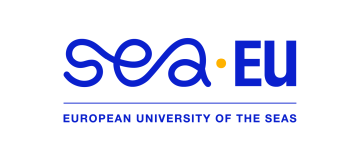ORCID: 0000-0001-6461-1036
The research projects have been focused on: endocrine disruptive chemicals (bisphenol A, 4-tert-octylphenol, 4- nonylphenol); mercury and methylmercury; toxic metals; iron speciation; nutrients; carbon (inorganic and organic forms, black carbon, dissolved and suspended forms); methane; microplastic; photodegradation processes. Our field of studies are: atmosphere (gaseous substances and particulate matter), water (including microlayer), suspended particulate matter, plankton, fish, benthos, marine mammals, marine birds, sediments (including porewater).
analysiss conducted on: High-Performance Liquid Chromatograph; High Performance Ion Chromatography; dual-beam spectrophotometer and spectrofluorometer; Spektrofotometr UV-VIS; automated methylmercury system; directive mercury analyser; Dual Optical Carbonaceous Analyzer; Total organic carbon analyzer; CHNS/O Elemental Analysis; toxicity bioassay
The samples are collected using: High Volume Cascade Impactor; Six-step microbiological impactor; Hydra Dual PM1/PM2.5 sampler; Carousel water sampler with CTD profiler and extra sensors (pH; oxygen; dissolved organic matter sensors; chlorophyll a fluorescence and turbidity; water transparency sensor) SEALOGGER; Multi Sediment Trap; Vibro corer with 3m and 6m units; 8 core multi corer; Rumohr Lot corer; Niemisto corer
Bełdowska Magdalena, Kobos Justyna.2016. Mercury concentration in phytoplankton in response to warming of an autumn - winter season. Environmental Pollution 215, 38-47, DOI:10.1016/j.envpol.2016.05.002
Brocławik Olga, Łukawska-Matuszewska Katarzyna, Brodecka-Goluch Aleksandra [et al.]. 2020. Impact of methane occurrence on iron speciation in the sediments of the Gdansk Basin (Southern Baltic Sea). Science of the Total Environment 721, 137718, 1-14, DOI:10.1016/j.scitotenv.2020.137718
Grajewska Agnieszka, Falkowska Lucyna, Saniewska Dominika [et al.] 2019. Changes in total mercury, methylmercury, and selenium blood levels during different life history stages of the Baltic grey seal (Halichoerus grypus grypus). Science of the Total Environment 676, 268-277, DOI:10.1016/j.scitotenv.2019.04.204
Staniszewska Marta, Nehring Iga, Mudrak-Cegiołka Stella. 2016. Changes of concentrations and possibility of accumulation of bisphenol A and alkylphenols, depending on biomass and composition, in zooplankton of the Southern Baltic (Gulf of Gdansk). Environmental Pollution 213, 489-501, DOI:10.1016/j.envpol.2016.03.004
Wiśniewska Kinga, Lewandowska Anita, Śliwińska-Wilczewska Sylwia. 2019. The importance of cyanobacteria and microalgae present in aerosols to human health and the environment - review study. Environment International 131, 104964, 1-11, Numer artykułu, DOI:10.1016/j.envint.2019.104964
